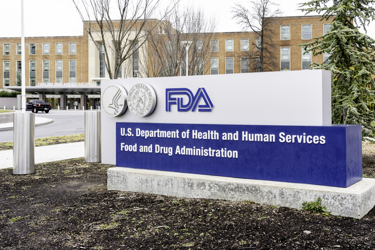Dr. Peter Marks' Advancing Cell And Gene Therapies Presentation At Meeting On The Mesa, A Q&A

By Erin Harris, Editor-In-Chief, Cell & Gene
Follow Me On Twitter @ErinHarris_1

Earlier this month, ARM held its annual Meeting on the Mesa virtually, and as expected, the event was chock-full of actionable information by way of panel presentations, partnering sessions, the exhibit hall, and more. I covered the panel discussion titled, Disruptive Technologies that Will Change Therapy, which covers the disruptive advances for re-dosing and more.
Here, I address one of the most engaging sessions at this year’s event — Featured Fireside Chat: FDA Perspective and Live Q&A Session. Janet Lambert, CEO of ARM talked to Dr. Peter Marks, Director, Center for Biologics Evaluation and Research (CBER), FDA, after he delivered his presentation, Advancing Cell and Gene Therapies: Where Do We Go from Here? In case you missed the session, here are some of the questions he addressed at the conclusion of his talk.
What is the number one thing the cell and gene sector can do to help you advance the cause at FDA?
Dr. Marks: Support us as we work to obtain the resources and the advanced scientific knowledge to be able to most capably review the novel products that we are regulating in this space. For iPSC-derived cell therapies, what do you view as the biggest challenges to getting a product approved? What would you need to see by the end of Phase 1/2 to move onto Phase 3? This is really going to depend to the nature of the product. For iPS derived cells like blood cells, it may be that after a Phase 1/2 study that a phase 3 study may mainly contribute additional safety and efficacy data. For other applications, a more rigorous and robust trial may be needed. We will welcome discussions here as products come through development as to the best pathway forward. What are your thoughts on changing iPSC generation/ manufacturing processes, between Phase 1/2 and Phase 3? This is a bit of a challenging area. Experience to date has shown that major manufacturing changes can be associated with real changes in product characteristics. If such a change is contemplated at the outset, I would strongly recommend finding a critical quality attribute(s) to follow and to discuss this with the agency in advance.
When do you think large scale and efficient manufacturing needs to be considered when a therapy is being created by companies?
Dr. Marks: Simple: it is never too early. Best to contemplate the path toward scale up early on, as sometimes success in this space comes very quickly, and it is a shame when manufacturing scale up must hold a product back from reaching the market.
How extensive were the comments on the orphan sameness guidance and do you have a timeline for finalizing the guidance?
Dr. Marks: I cannot comment on how extensive the comments were at this point, but we hope to finalize this guidance in the not too distant future.
Who does the FDA consult with to define guidelines in cell and gene therapy?
Dr. Marks: We consult with a variety of sources: industry, scientific meetings, our Cell and Gene Therapy Advisory Committee, other global regulators (there are clusters of regulators who meet to discuss cell and gene therapies — two separate groups). And this is all in addition to drawing on the experience of our researcher-reviewers who work in related fields.
What is the view of the agency on non-viral gene delivery?
Dr. Marks: Some current technologies are being used in new COVID vaccines. We are enthusiastic to see the development of non-viral vectors for gene therapy and look forward to working with sponsors on these programs as they work to achieve the necessary efficiency needed for effective gene transfer.
What are the key items that will help to determine if a product can speed up without many of the usual clinical and CMC requirements?
Dr. Marks: Probably the most important aspect right now will be able to find disease entities that can be treated by constructs that make use of the same vector that can be manufactured and characterized by a well-defined process that has been used previously, and that ideally is associated with a product approved by FDA. This is the idea of reusing a vector like a razor and the insert is like a razor blade (in this case one razor can accept different blades within a certain tolerance).
How can we use the benchmarks from mABs and small molecules to understand how the FDA view gene therapies?
Dr. Marks: It is going to be a bit of a case-by-case issue, and discussion with the agency may be necessary to know whether we consider two vector/inserts the same or different. An example where it would clearly be different is when the promoter allows clearly different features — such as regulated expression versus unregulated expression. Since manufacturing remains a primary challenge for cell and gene therapies, how can we engage the Contract Manufacturing voice sooner and more regularly.
What forums or formats can contract manufacturing organizations utilize to engage with FDA?
Dr. Marks: We would encourage contract manufacturers working on platforms to engage with us as part of CATTS meetings. We may also try to sponsor workshops in this area in the future.
